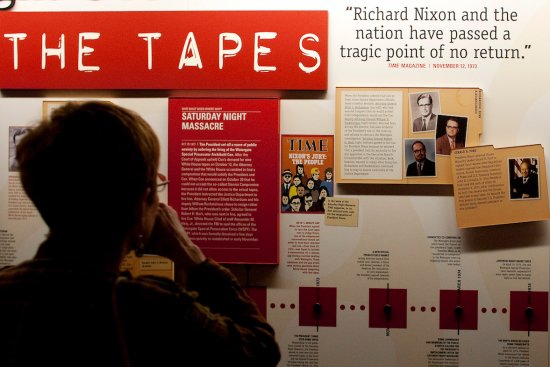
The 'Monday Night Massacre' comparison isn't perfect, but here's what to know
When President Donald Trump fired acting attorney general Sally Yates on Monday, after she refused to defend his executive order on immigration, the late-night shakeup was dubbed the “Monday Night Massacre” by some who drew comparisons to former President Richard Nixon’s infamous 1973 “Saturday Night Massacre.”
On Saturday, Oct. 20, 1973, Nixon ordered U.S. Attorney General Richardson and Deputy Attorney General William Ruckelshaus to fire special prosecutor Archibald Cox, who had been appointed to investigate the Watergate scandal and who had objected to Nixon’s refusal to obey a court order to turn over evidence in the case. Both Richardson and Ruckelshaus refused Nixon’s order and resigned. Solicitor General Robert Bork then became acting attorney general and complied, firing Cox—and dismantling his investigatory operation—and setting off a firestorm of criticism. In subsequent cover stories that year, TIME called it “one of the gravest constitutional crises” in White House history and a key moment in “the most tumultuous week of modern U.S. political history.”
“In these historic events, the President was acting in direct defiance of a court order,” TIME explained. “By abolishing the independent arm of the Justice Department that was created at the insistence of the Senate, Nixon was challenging the Congress that holds the power to impeach and try him for violating his oath of office.”
“Whether ours shall continue to be a government of laws and not of men is now for Congress and ultimately the American people to decide,” Cox said at the time.
[time-brightcove not-tgx=”true”]Both the Trump and Nixon incidents involved the controversial firing or resignation of Justice Department leaders who had raised questions about the legality of presidential orders and refused to comply, and both took place at odd hours. But there are also significant differences between the two situations.
Yates, who was appointed deputy attorney general under former President Barack Obama, became acting attorney general this month and was only supposed to lead the department until the Senate confirmed Sen. Jeff Sessions, Trump’s nominee for Attorney General. Trump’s replacement of Yates was an effort to enforce his controversial immigration order, which halted the U.S. refugee program and temporarily banned immigrants from seven Muslim-majority countries. Trump announced that Yates would be replaced by Dana Boente, U.S. attorney for the Eastern District of Virginia, and said that she had “betrayed the Department of Justice” in refusing to defend the order.
The 1973 episode, however, went deeper. Richardson and Ruckelshaus had been officially appointed to serve in Nixon’s administration. In firing Cox, Nixon defied a court order and interfered with an independent investigation into a crime, a controversial move that escalated the push toward his ultimate resignation and sparked fundamental questions about the institutions of the U.S. government.
“To call into question the vital issue of whether its own Government recognizes the primacy of a system of laws over political expediency and personal power is to rock the nation to its philosophic foundations,” TIME wrote in 1973. “It is not any imagined White House enemies in the press, the courts or the Congress that have created this situation. Richard Nixon, through his reckless deeds of last week, did it all alone.”